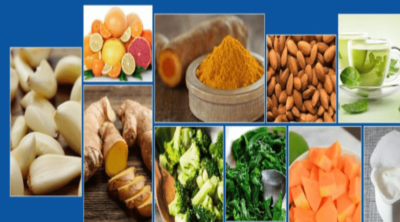
Coconut oil remains an essential cooking oil in India today. However, it is slowly gaining popularity in the western world, owing to its multiple uses apart from cooking. This NutriNeat article discusses the two variants of coconut oil―refined and unrefined―along with their differences.
Did You Know?Crude, unrefined coconut oil has been in use, both as an edible oil and otherwise, for centuries in India and other Asian countries. However, there have been no widespread reports of any undesired effects of consuming unrefined coconut oil. |
Coconut oil is an edible oil extracted from the kernel (meat) of mature coconuts. It has high concentrations of saturated fat, accounting for about 90% of the total fat. Apart from cooking, this oil also has therapeutic uses owing to its healing properties.
Coconut oil contains two main ingredients that are beneficial for health: polyphenols and lauric acid (a medium-chain fatty acid).
Polyphenols have an antioxidant effect on the body, which prevents the oxidation of cholesterol. This considerably minimizes the risk of developing atherosclerosis and other cardiovascular disorders.
Lauric acid enhances the body’s immune system, and protects it from viral and bacterial attacks.
There are two varieties of coconut oil in the market. One which is mass produced and processed, called refined coconut oil, while the other which is less produced and unprocessed, called unrefined coconut oil.
Refined coconut oil refers to the oil extracted from dried coconut meat, known as ‘copra’, which undergoes an intensive bleaching and deodorizing process. Such treatment becomes mandatory, because the coconuts are dried out in the open for days, weeks, or even months, until they dry up completely. During this period, they may get contaminated due to various factors like dust, fungal growth, and pests. As a result, the oil which is extracted from these dried coconuts should be purified for making it suitable for consumption.
Initially, the raw oil is repeatedly passed through calcareous clays, which filters as well as bleaches the oil. The filtration process also deodorizes the oil. This clean filtrate is then subjected to high temperatures to kill the pathogens within it. Later, certain chemicals such as sodium hydroxide is added to it, and the oil is further filtered to remove the mono-saturated fats and to prolong its shelf life. Sometimes, the resultant oil is hydrogenated to ensure that no unsaturated fats are left behind in the oil.
Unrefined coconut oil, also referred to as ‘virgin’ or ‘pure’ coconut oil, is the crude coconut oil that has been obtained directly from fresh coconut meat. There are two different methods to produce unrefined coconut oil, namely, quick drying and wet milling.
Quick Drying: In this method, the coconut meat is quickly dried using minimal heat, and then the oil is extracted out through mechanical means.
Wet Milling: In this method, the oil is extracted from fresh, undried, raw coconut meat. The coconuts are pressed to obtain coconut milk, which is further subjected to oil extraction processes, such as boiling, refrigeration, mechanical centrifuging, fermentation, or addition of enzymes.
Both the aforementioned methods make the oil safe for consumption without bleaching or deodorizing it.
| Differentiating Factor | Refined Oil | Unrefined Oil |
| Taste and Odor | The refining process robs off the natural coconut flavor and odor from the oil, rendering it tasteless and odorless. | The oil is not subjected to a bleaching and deodorizing process. As a result, it retains its natural flavor, and hence, is more flavorful than its refined counterpart. |
| Nutrition | Bleaching and heating of the oil depletes its nutrient content. Sometimes, hydrogenated refined oil contains trans fats, which are not good for the heart. | The oil is rich in nutrients such as proteins, vitamins, and antioxidants, owing to minimal processing. |
| Polyphenols | The oil loses it antioxidant property since bleaching destroys the polyphenols. | This oil is highly antioxidant since polyphenols are unharmed. |
| Lauric Acid | The lauric acid, being saturated in nature, remains stable in both refined and unrefined oil. | |
| Hygiene | The oil is free of impurities owing to the intensive refining process. | The oil may contain dust particles and other impurities that were not removed during processing. |
| Smoking Point | The smoking point of this oil is 450°F. Thus, the refined variety is suitable to be used for frying purposes. | The smoking of the oil is point is 350°F. |
| Shelf Life | It has a longer shelf life due to the presence of certain chemicals. | It has a shorter shelf life. |
| Availability and Cost | Refined oil is easily available in the market and comparatively less expensive. | Most of the crude coconut oil is converted to refined oil. As a result, the unrefined variety is rarely available, making it slightly more expensive than the refined variety. |
Since ages, coconut oil has been used for hair care in Asian countries, especially India. A regular scalp massage with this oil nourishes the hair and keeps it free from dandruff. The oil easily penetrates and moisturizes the skin. Therefore, it is popularly used as a massage oil for both babies and adults. It can also be used to heal diaper rash in babies and acne problems in adults. Apart from these, coconut oil is also used in the production of food items, cosmetic products, conditioners, dandruff relief creams, soaps, lip balms, etc.
Although both unrefined as well as refined coconut oil can be equally used for cooking or otherwise, the unrefined variety still remains a better option because it contains more nutrients than the refined oil. Therefore, always go for virgin coconut oil that is made only from fresh coconuts and devoid of any kind of processing.
